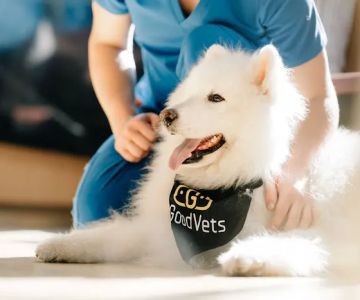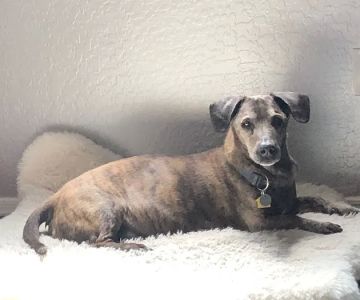How to Handle a Pet’s Jealousy and Foster a Positive Relationship
As a pet owner, I’ve encountered my fair share of challenges when it comes to managing my pets’ behavior. One of the more surprising issues I’ve had to face is jealousy between my pets. Just like humans, pets can experience feelings of jealousy, particularly when it comes to their territory, attention from their owners, or the introduction of new pets into the household. If you’ve ever noticed your pet acting out when another pet gets attention, then you know exactly how challenging and confusing it can be. In this article, I’ll share my experience and provide practical advice on how to handle a pet’s jealousy.
1. Understanding Pet Jealousy
The first step in addressing jealousy in pets is understanding why it happens. From my personal experience, jealousy often arises when a pet feels threatened by the attention or affection given to another pet or individual in the household. It’s not uncommon for pets to feel insecure when their “status” is challenged, whether it’s by a new pet, a new person, or even new activities that take the attention away from them. By recognizing the signs of jealousy in pets, you can take proactive steps to minimize these behaviors.
1.1 Signs of Jealousy in Pets
Pets express jealousy in different ways, and recognizing these signs is key to addressing the behavior. Some common signs of jealousy in pets include:
- Barking, meowing, or whining excessively when another pet is near their owner.
- Displaying aggressive behavior such as growling, swatting, or snapping when other pets approach.
- Attempting to get between the owner and the other pet.
- Suddenly becoming needy and seeking constant attention.
- Engaging in destructive behavior, like chewing on furniture or scratching doors, to seek attention.
When I first noticed my dog’s jealous behaviors, it was primarily when my cat would sit on my lap for attention. My dog would start whining, trying to wedge herself between us, and even knock the cat off the lap. These behaviors were a clear sign of jealousy, and it took time to manage them effectively.
2. Creating a Balanced Environment
One of the most effective strategies I found to manage pet jealousy was creating a balanced and positive environment. This doesn’t just mean giving equal attention to all pets, but it also involves making sure each pet feels secure in their space. Here are some ways I’ve made my home a more harmonious environment:
2.1 Establishing Separate Spaces
Each of my pets has their own space within the house. Whether it’s a bed, crate, or designated area, giving each pet a space to call their own helped alleviate feelings of competition. I found that my dog and cat became more comfortable with each other when they had separate spaces where they could retreat to when they needed alone time. This helped reduce the tension that often arose when they felt crowded or overstimulated.
2.2 Structured Attention
It became clear to me that dividing attention between my pets in a structured way helped prevent jealousy. For instance, I would spend a few minutes with my dog, then switch to my cat. Both pets knew they would get individual time with me, which minimized their need to compete for attention. It’s important to recognize that pets, like people, need attention and affection, but it’s crucial to give it in a way that doesn’t fuel jealousy.
3. Positive Reinforcement and Training
Training is an essential tool for managing jealousy in pets. By teaching your pets proper behavior and rewarding positive actions, you can discourage jealousy-related behaviors. I found that when I rewarded my dog for calmly waiting her turn for attention or when she shared space with the cat without acting out, she began to learn that patience brought rewards.
3.1 Rewarding Calm Behavior
Whenever my dog displayed calm behavior around my cat or when she didn’t interfere with my cat’s space, I would give her a treat or praise her verbally. This positive reinforcement helped her understand that she would get attention when she behaved appropriately. Over time, her jealous behaviors decreased, and she learned how to share space more peacefully.
3.2 Consistent Commands
Consistency was another key factor in managing my pets’ jealousy. I used consistent commands to reinforce boundaries and expectations. For example, I would use the command “leave it” when my dog tried to intrude on my cat’s space. This helped her understand that she couldn’t act aggressively or demand attention when I was interacting with the other pet.
4. Introducing New Pets Carefully
If you’re considering introducing a new pet into your home, it’s important to do so slowly and carefully to avoid triggering jealousy in your current pets. I learned the hard way that introducing a new pet too quickly can lead to territorial behavior and aggression. To ease the transition, I made sure to introduce my pets to each other gradually, allowing them to become accustomed to the new smells, sounds, and routines before they met face-to-face.
4.1 Gradual Introductions
When I brought a new puppy into my home, I allowed the dog and cat to smell each other’s scent from a distance before introducing them in person. This helped them adjust to the new presence without the immediate stress of direct contact. Over the course of a week, I slowly allowed them to interact under supervision, and I made sure to reward both pets for calm behavior during these interactions.
5. Seeking Professional Help if Needed
While I was able to manage my pets’ jealousy with patience and training, there were moments when I needed professional help. Consulting a veterinarian or a certified animal behaviorist can be an excellent option if jealousy leads to persistent aggression or anxiety in pets. These professionals can help you address any behavioral issues that may be affecting your pets’ relationship with each other.
5.1 When to Seek Help
If your pets are engaging in severe aggressive behavior or showing signs of anxiety that don’t improve with basic training, it’s a good idea to seek professional advice. A behaviorist can provide tailored solutions based on your pets’ unique needs and help you address jealousy in a way that benefits both you and your pets.











